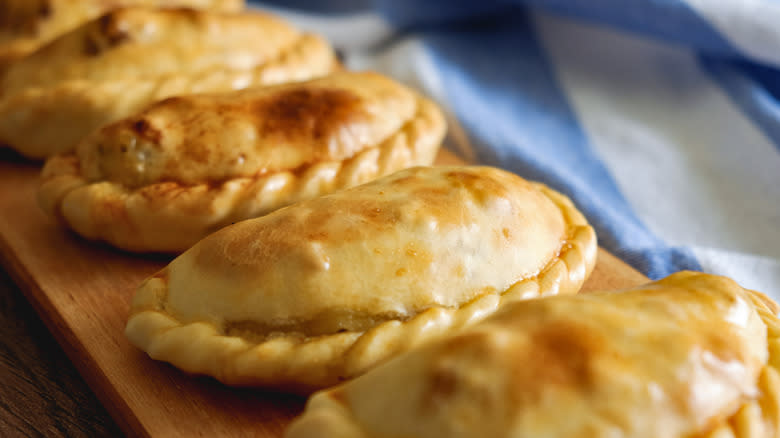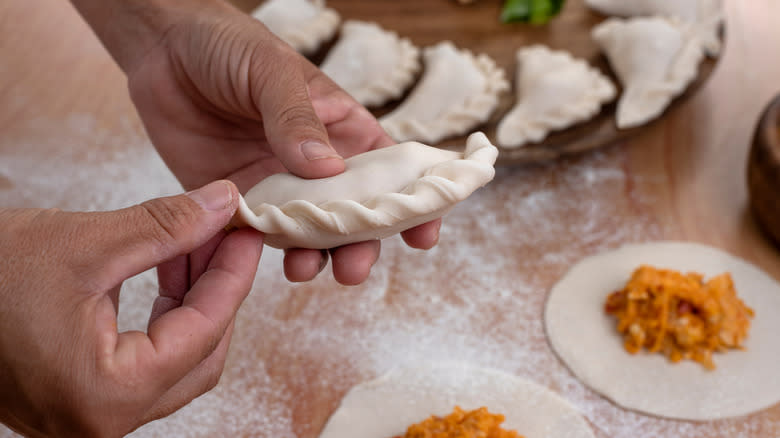Empanada Tip: The Repulgues Will Tell You A Lot About Your Next Bite

Most Latin American countries, save Brazil, Belize, and Guyana, share a common history as former Spanish colonies, which accounts for a shared language and many shared culinary traditions. Just as each Latin American country has adapted the Spanish language into unique dialects, accents, and colloquialisms, each country has also put a unique twist on shared culinary traditions. The empanada is a dish of Spanish origin that has become a mainstay in many Latin American nations, from Mexico to Argentina. Argentinians take special pride in their empanadas with perhaps the most diverse of regional flavors and cooking methods.
Argentine empanadas can be fried or baked but they all have the same half-moon shape. Their curved borders sealed with numerous pleats, braids, or crimps are known as repulgues. "Repulgo" means stitch or border in Spanish, and they serve both practical and aesthetic purposes. While repulgues have certainly become an art form in Argentine culinary traditions, their utility is, most importantly, as a signifier.
Since there are numerous types of sweet and savory fillings, shops and chefs began pairing certain repulgue patterns with specific fillings so customers would be able to tell different empanadas apart without having to cut or bite into each one to reveal the filling. The consensus is that braided edges signify beef fillings, large, continuous crimps signify chicken, the classic fork pleat is for ham and cheese, and a smaller, almost tortellini-looking folded half-moon houses humita, a creamed corn filling.
Read more: 8 Absolute Best Cuts Of Meat To Deep Fry
Tips For Making Empanadas And Repulgues

Repulgues are signifiers, but the tighter and more well-formed each shape is, the more likely it is to prevent all of the juicy, cheesy fillings from escaping as the empanada bakes or fries. While the patterns are beautiful visuals, making them isn't as hard as it looks, and you'll hone your skills with each newly formed empanada.
Leave plenty of space around the doughy edges; you'll want only a small spoonful of filling placed in the center of the circular plate of dough. Secondly, use your finger or a brush to wet the edges so that the dough is extra sticky when you begin creating the seal. Every repulgue begins with a simple flat seal along the outer edges, similar to an Asian noodle dumpling like a Japanese gyoza or pot sticker.
Fillings for Argentine empanadas run the gamut from cheese to vegetables to meat with many specialties associated with certain regions. One of the most popular fillings is ground beef with peppers and a hard-boiled egg, known as empanadas Saltenas for the northern region of Salta, where they originated. Italian influences in Argentina are apparent in popular fillings like caprese with mozzarella and tomatoes or goat cheese and walnut. Of course, a beloved sweet empanada is filled with dulce de leche, yet another ingredient that's popular throughout Latin America.
Read the original article on Tasting Table.

